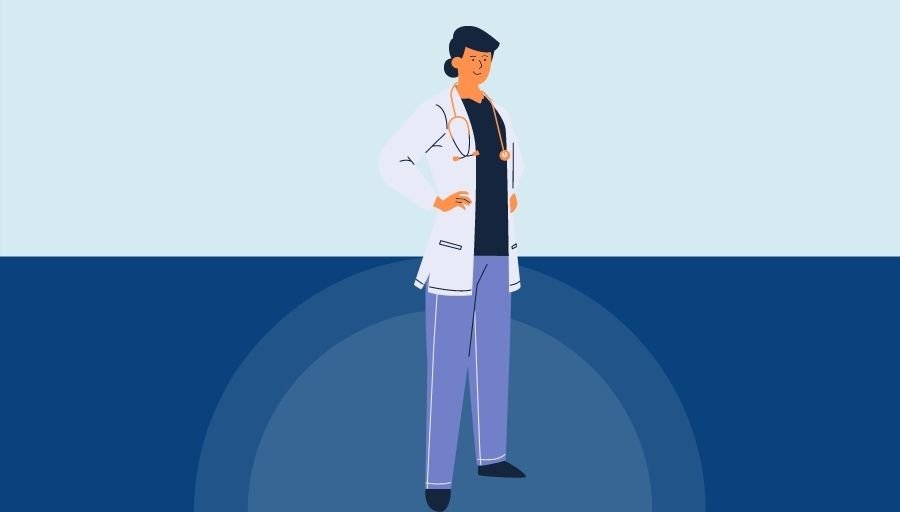(2023) CPT 36415 – Description, Modifiers, Reimbursement & Examples
CPT 36415 narrates the collection of venous blood by venipunctures. In this procedure, a health care provider inserts a needle into a vein to collect a blood sample, and the skills of a physician are not required to perform this service.
CPT 36415 Description
The CPT 36415 is used to collect a blood sample from superficial peripheral veins of upper or lower extremities. Mostly, a physician’s skill is not required to perform this service.
However, nursing staff in a health care setting is trained enough to perform such services. The collection of blood samples sometimes is denoted as a blood draw.
Commonly, the blood is collected from the cubital vein of the anterior forearm at the elbow fold as it is an easy access site.
While coding the 36415 CPT code, bear in mind only one unit is allowed to bill on the same date of service (DOS) per provider even if multiple specimens/ blood samples are taken for different pathologic tests or multiple sites are accessed to obtain an adequate volume of blood for the desired test.
While analyzing the data, it must be considered that blood sampling can be withdrawn from multiple access sites, i.e., cubital vein and capillary blood collection, e.g., finger, heel having different CPT codes; CPT 36415 and CPT 36416, respectively.
Moreover, code descriptions for CPT 36415 and HCPCS level- ll S9529 are similar except for the place of service (POS). HCPCS Level- II code S9529 is typically for single homebound, nursing home, or skilled nursing facility patients.
When the provider performs two phlebotomies (CPT 36415 and CPT 36416) services on the same encounter, the CPT code 36415 is the only service eligible for reimbursement.
No modifier unbundles these services as these two events are mutually exclusive to be billed on the same date of service (DOS).
The coder/ biller must submit a claim with an appropriate POS as per CMS guidelines to get an appropriate reimbursement.
For example, if a provider bills the services at the office, then the POS must be 11. If an independent diagnostic laboratory bills the venipuncture on an in-patient or out-patient hospital, the POS must be 81.
The difference between both services (CPT 36415 and CPT 36416) should be kept in mind while coding.
The choice of the precise CPT code is crucial to get timely reimbursement. If the description on documents or CPT description is not carefully read, it may lead to an inappropriate code selection, resulting in payment imbalance.
All of these services are for venipuncture, but blood vessel, POS, patient age, and physician skill criteria are different. To understand blood vessels, at first, you need to know the vasculature system.
The vasculature system is mainly divided into two venous and arterial blood vessels. Venous blood vessel contains deoxygenated blood, and arterial blood vessel contains oxygenated blood—most of the time, deoxygenated blood flow in veins and oxygenated blood flow in arteries.
The exception is for pulmonary artery and pulmonary vein.
The subdivision of arteries is called capillaries. CPT 36416 describes the blood sample taken from capillaries, and CPT 36415 defines as the blood sample taken from veins.
Accurate selection of CPT in this case solely relies on a complete understanding of the vascular system.
If the coder/ biller mistakenly has not coded the document properly or proper information is not available in medical documentation, there may be a huge impact on reimbursement. The effect may be underpayment or overpayment.
The physician fee schedule for venipuncture for CPT 36415 is $3. So, the billing team may be exclusively responsible for proceeding with CPT code 36415 when necessary and establishing a medical necessity.
Medical Qualification For CPT 36415
The current procedure terminology for CPT 36415 does not require a medical qualification. The refusal of a claim for payment of CO-97, M15, M144 or N70 must be adjusted if the procedure or service is not paid.
Modifiers
The American Medical Association created Modifier 33 to allow providers to identify preventive services for patients without cost sharing that do not apply to patients protected by the Affordable Care Act.
This modifier is suitable for diagnostic and treatment services as well as for carrying out preventive services and can be used for CPT 36415. In some cases, the appropriate diagnostic code depends on the type of depression the patient has.
Does CPT Code 36415 Need a Modifier?
CPT 36415 does not require a modifier to override the edit.
Modifier’ 59′ is not a valid modifier for venipuncture. When billing with office visits, use modifier ’25’ with E/M.
Routine venipuncture or the collection of specimens in an ASC (Ambulatory Surgical Center) is a subset part of the primary procedure.
Modifiers’ XS,’ ‘XP,’ ‘XE,’ ‘XU,’ ’90’, and ’59’ with CPT 36415 are not valid with a diagnostic lab test.
The collection of the specimen is not a separate procedure in this case. Collection of sample service is allowed to bill separately only when the other lab services are billed for that date and by that provider. Most importantly, the specimen is not obtained by venipuncture, e.g., urinalysis.
The global concept does not apply to this CPT code 36415, which means all modifiers exclusively for the global period are invalid with CPT 36415.
If any of the services need a referring provider, then the name and NPI of that provider must be reported with the claim to get reimbursement.
While in most cases, the QW modifier (CLIA waived test) may be billed with diagnostic lab services (80000 codes), which means the provider must hold a certificate of clinical laboratory testing.
CPT 36415 is considered as critical care services and also incidental services. Critical care services may be denied when submitted with neonatal and pediatric critical services.
Billing Guidelines for Medicare & Commercial Payers and Reimbursement Policy
The US healthcare system is broadly categorized into two main divisions; one is government payer Medicare/ Medicaid, and the other one is commercial payers.
Medicare fee for blood sampling is generally included in the reimbursement for the blood test. A maximum of one unit can bill the same DOS, same provider, and same member.
Two or more blood collection procedures during the same episode of care cannot be reported as additional UOS (unit of service). Medicare may not reimburse for routine venipuncture. Many private payers do not reimburse for routine venipuncture.
CPT code 36415 is included in critical care when performing in the duration of a critical period. Therefore, this service is not coded separately. However, the commercial payer may reimburse separately with an appropriate POS (place of service).
Routine venipunctures as in the 36415 CPT code are eligible for reimbursement when billed with E/M and/ or laboratory services unless an additional routine venipuncture is clinically necessary.
ICD 10 CM code Z01.812 is an encounter for preprocedural laboratory examination, applicable to blood and urine tests before the specific procedure. And this ICD 10 code is not valid for a hospitalized patient.
Phlebotomy or venipuncture service (36415 CPT code) can only be billed as a single unit even though many attempts are made to access the vein.
But in a very few scenarios, CPT code 36415 can be billed more than one unit if medical necessity is proven otherwise.
As per MUE edits, CMS (Center for Medicaid and Medicare) indicates the MUE adjudication indicator is ‘3’. And ‘2’ units of CPT code 36415 are allowed to bill on the same DOS (date of service).
For example, if a patient is suffering from Dengue fever, and in this disease, platelet count suddenly drops.
And in some cases, the platelet count continues to drop with time. Therefore, the provider must examine the patient’s platelets count more than once per day. So, blood sampling through a vein can be taken more than once per DOS.
While submitting venipuncture services (CPT 36415) must require an ordering provider in a written order for all laboratory services.
A qualified practitioner must report and provide written order that supports the medical necessity specific to the patient. If the valid document is not submitted with a claim, then the venipuncture service may be denied as not medically necessary.
Reimbursement is not much, i.e., $3, but the CMS may audit CPT 36415 and it can be labeled as the provider retrieving funds in error.
Clinical laboratory services are not acceptable to bill CPT code 36415 when billed with blood or serum lab tests. The 36415 CPT code may be denied as a part of the main procedure.
For ASC (Ambulatory Surgery Services), blood sampling is not separately billed. And the blood collection services are included in the primary procedure package.
Medically unlikely edit limits apply to routine blood sampling services for out-patient hospital services.
For in-patient services, a maximum of one unit is allowed to bill per service date.
While billing the venipuncture (CPT 36415), if there are no covered diagnoses mentioned in medical notes, the patient should be informed as ABN (Advance beneficiary notice).
Thus, the patient should know that the services are not covered, and the patient should be responsible for the blood sampling services.
An order of provider for blood sampling is a necessary document for reimbursement. Several frequencies and reasons for the service CPT 36415 are also appropriate to get reimbursement. In this case, one should have an appropriate document before the blood sampling.
For example, Medicare would not have covered venipuncture if a document is not available that mentioned periodic testing. Attestation for an order is not only accepted by the provider’s signature, but the attestation statement is also valid for getting a reimbursement.
When proper guidelines are not followed, the claim may be denied due to the reasons mentioned below:
PR-204: The service or equipment, or drug is not covered under the patient’s current benefit plan.
PR-49: These are non-covered services because this is a routine exam or screening procedure in conjugation with a routine exam.
The denials mentioned above can be resolved if the proper documents are submitted that support the medical necessity to be reimbursed accordingly. CMS develop an advance beneficiary notice (ABN) form.
Use of ABN form is optional for services excluded from Medicare benefits. If claims are submitted as a non-covered service to Medicare, the HCPCS modifier ‘GY’ should be added with the CPT 36415.
Example 1
A 10-month-old patient is provided with critical care face-to-face services by the provider, and venipuncture services are performed.
In the above case, as mentioned, a patient’s age is ten months, and he is critically ill. The blood sampling is taken to find out the diagnosis.
The billing of venipuncture code (CPT 36415) is not valid in this case. The venipuncture code (CPT 36415) must be billed separately.
Example 2
A 62-years-old male patient made a routine visit at the provider’s office. The provider orders a written form of a lipid panel laboratory test (CPT code 80061).
This is to monitor and regulate the lipid-lowering therapy. The patient was prescribed atorvastatin 10 mg three months ago.
In this circumstance, the provider orders the lipid panel laboratory test in written form to justify the medical necessity when submitting the claim.
A blood sample is taken from the left upper cubital vein to monitor the lipid level of the patient.
The venipuncture code (CPT 36415) is not separately reported, in this case, as it is a part of the lipid panel test (CPT 80061).




